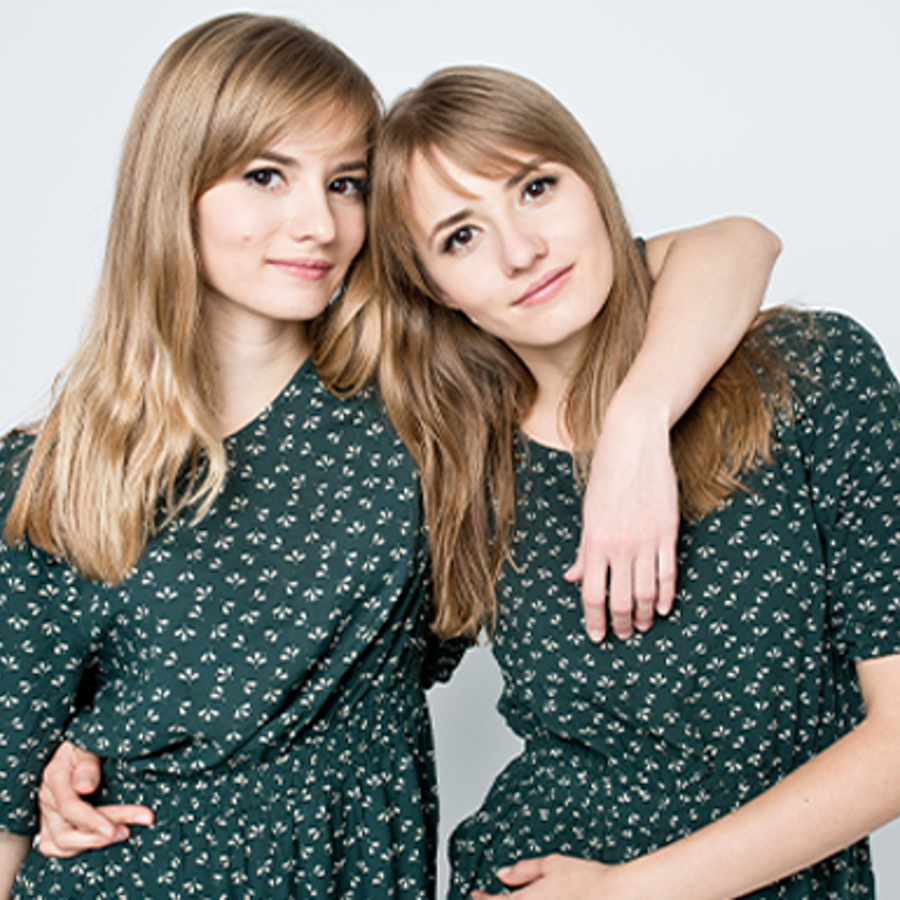
If identical twins get pregnant by the same man will their children be exactly the same?
July 1, 2005

- Related Topics:
- Recombination,
- Meiosis,
- Relatedness,
- Twins
An undergraduate from Michigan asks:
"If identical female twins get pregnant by the same man will their children be exactly the same if they are the same sex?"
Interesting question! The quick answer is that the children will not be the same. If you think about it, this scenario isn't really that different than the same man and woman having two kids of the same sex.
So why don't sisters and brothers look exactly alike? And not only that, how come they can look so different? There are two specific events that contribute to everyone being so different. Let's see what they are.
Chromosomes and Meiosis
As you know, our DNA helps determine what we look like, how we act, what diseases we might get and a whole lot more. And ultimately what DNA we get is determined from the egg and sperm that combined to make us. So to understand why siblings are so different from each other, we need to figure out how sperm and eggs get their DNA.
First off, as you probably know, all of our DNA is packaged and stored along with some proteins in our cells as chromosomes. Most of our cells have 23 pairs of chromosomes for a total of 46. One set of 23 comes from mom and the other 23 from dad.
The egg and sperm cells are an exception -- they have only 23 chromosomes each. A sperm from the man combines with a woman's egg in her womb to make a zygote. The zygote ends up with a total of 46 chromosomes and can now grow into a baby.
Sperm and eggs end up with the DNA they get through a process called meiosis. When cells normally make new copies of themselves, each of the new cells ends up with 46 chromosomes (at least for humans).
However, in meiosis, each new cell ends up with 23. How are the 23 chosen? For each of the 23 pairs, one of the two goes into the sperm or the egg. The choice of which of the chromosomes in the pair is totally random.
Statistics of Meiosis
So if nothing else were involved what would be the chances of having exactly the same kids? As you'll see, not very likely at all. To figure this out, we need to look at statistics (sorry about that!).
Let's name the twin sisters Sally and Jane. And their common partner, Bob. We're going to figure out the chances that Sally and Jane will make an egg with the exact same DNA. We'll also figure out the chances of Bob making the exact same sperm. And finally we'll figure out how likely it is that two of the exact same sperm from Bob will fertilize the exact same eggs from Sally and Jane.
To make this daunting task simpler, let's imagine that people have 1 giant chromosome. So Sally, Jane and Bob each have two copies of this single chromosome. To keep track of whose chromosome is whose, we'll give them different names. Sally's and Jane's pair will be A and a (remember, they are identical twins, so they both have the exact same DNA), and Bob's will be B and b.
OK, let the fun begin! When Sally makes an egg, there is a 50% chance the egg will have A and a 50% chance it will have a. The same is true for Jane. When Bob makes a sperm, there is a 50% chance the sperm will have a B and a 50% chance it will have b.
So what are all the possibilities of sperm and egg meeting in this example? They are:
A + B = AB
A + b = Ab
a + B = aB
a + b = ab
In other words, 1 in 4 babies will be AB, 1 in 4 Ab, etc. So the chances of Sally and Jane having the same baby are 1 in 4. As you can see, even in this very simple example, Sally and Jane only have the same baby 25% of the time.
Now let's try 2 chromosomes. Jane and Sally will have two copies of these 2 chromosomes which we will name as A, a, C, and c and Bob's as B, b, D, and d. When Sally or Jane make an egg, it is random which A and which C chromosome goes in. The possible eggs are AC, Ac, aC, and ac.
For Bob, the possible sperms are BD, Bd, bD, and bd. Instead of 4, there are now 16 different possible combinations. This means the chances of having the same child go down to 1 in 16 (as shown in the table). With three chromosomes, the chances go up to 1 in 64.
For 23 chromosomes, there are over 10,000,000,000,000 possibilities*. In other words, there is a 1 in 10 trillion chance of having the exact same baby. This chance is essentially zero.
*To figure this out, you use the formula 1 in (2n X 2n) where n is the number of individual chromosomes. So, the chances are 1 in (223 X 223).
Chromosomes and Recombination
And the chances are actually even smaller than this! We don't get the exact same chromosome that our parents have.
During meiosis, each pair of chromosomes mixes with each other to create two new chromosomes. This process is called recombination.
For example, the chromosome B that Bob got from dad is actually a combination of his dad's two chromosome B's. And Bob's siblings got a different combination of dad's two chromosome B's. And this is true of all of dad and mom's chromosomes.
How does the cell figure out which parts to mix up? Well, first, any DNA trading that goes on is between two of the same chromosomes. In other words, Chromosome 5 only mixes with the other 5 and not with 6 or 8 and chromosome 6 mixes with only 6 and nothing else. In fact, problems can arise when mixing happens between different chromosomes.
For the most part, what parts get exchanged between two of the same kind of chromosome is nearly random. On average, 2-3 chunks of DNA are swapped between each pair of human chromosomes during recombination.
Normally, neither chromosome in the pair ends up with more DNA. This happens because the DNA exchange is reciprocal -- it is a two-way exchange between the two. This process scrambles the genetic makeup of each of the chromosomes.
We just followed through two important steps that happen when an egg or sperm is made. They are: chromosomal assortment and exchange of the chromosomal segments. Based on what happens during these two events, we can confidently say that each one of the billion sperm produced by a man or the eggs made by a woman is different.
Back to your question. Identical twins have the same genetic material, but as you can see, every egg they both make is different. Every sperm a man makes is different.
Hence the chances of their babies being identical are pretty close to zero. The kids wouldn't be any more alike than any brother or sister.

Author: Dr. Rama Balakrishnan
When this answer was published in 2005, Rama was a Scientific Curator in Mike Cherry's lab in the Department of Genetics. Rama wrote this answer while participating in the Stanford at The Tech program.
 Skip Navigation
Skip Navigation
